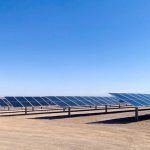
Silicon–perovskite combination (tandem) solar cells are designed with a multi-layered structure that optimizes the absorption of different parts of the solar spectrum. In these cells, a thin perovskite layer is deposited on top of a silicon sub-cell. The perovskite material, with its wider band gap, is engineered to efficiently absorb high-energy photons—typically from the blue and visible regions of the spectrum. In contrast, the underlying silicon cell has a narrower band gap, making it more suitable for capturing lower-energy photons in the red and near-infrared range that pass through the perovskite layer.
This layered approach takes full advantage of the fact that sunlight spans a broad range of energies. A single material with one fixed band gap can only convert photons with energies above that threshold, but by combining two materials with complementary band gaps, a tandem solar cell can convert a much larger portion of the incident solar spectrum into electrical energy. Essentially, the perovskite layer filters and converts the high-energy part of the spectrum, while the silicon layer handles the lower-energy light, leading to improved overall efficiency.
Moreover, these sub-cells are typically connected in series. This means that while the current generated by each cell is the same, their voltages add together, resulting in a higher overall output voltage for the tandem cell. However, this series connection also requires careful matching of the current produced by each sub-cell; if one cell generates significantly less current than the other, it can become the bottleneck that limits the performance of the entire device. As a result, optimizing both the band gap energies and the material quality is crucial for achieving a well-balanced and efficient tandem solar cell.
Stability Issues
Despite their promising performance and cost-effective production, perovskite solar cells still face several challenges that must be addressed before widespread commercialisation.
-
Stability: One of the major concerns is the stability of perovskite materials. Factors such as moisture, heat, and UV radiation can lead to degradation over time, significantly affecting the lifespan and reliability of the solar cells.
-
Scalability: While lab-scale devices have shown impressive efficiencies, scaling up production while maintaining performance and stability presents a challenge. Ensuring that large-area modules perform comparably to small samples is essential for commercial viability.
-
Regulatory Acceptance: As a relatively new technology, perovskite solar cells must navigate regulatory frameworks to gain acceptance in various markets. Rigorous testing and standardisation will be necessary to assure performance and safety.
While perovskite solar cells represent a significant advancement in photovoltaic technology, addressing these issues is imperative for future deployment in the renewable energy landscape. Ongoing research aims to rapidly mitigate these challenges and enhance the viability of perovskite solar cells for commercial applications. It appears that 2025 and 2026 will see the emergence of silicon-Perovskites as many of the leading manufacturers develop trial production facilities and start verifying commercial-scale systems.











